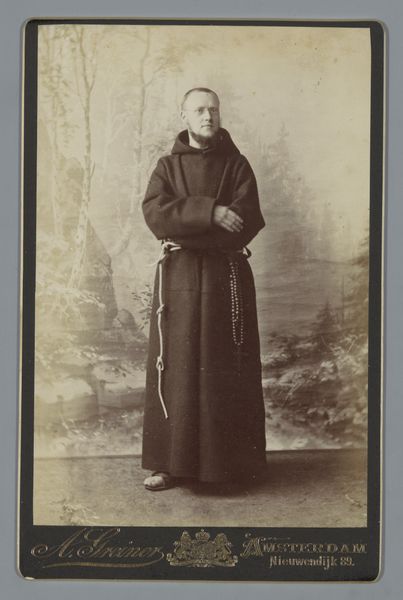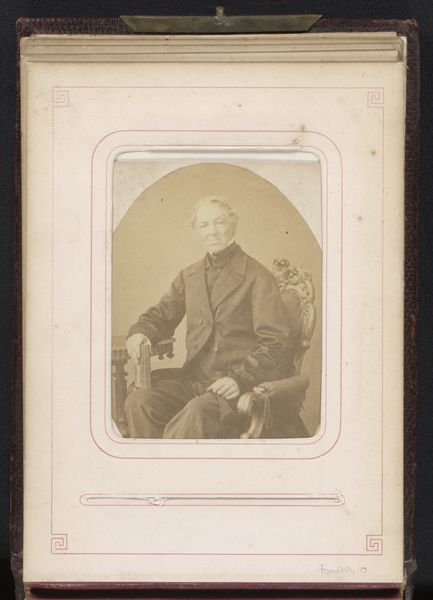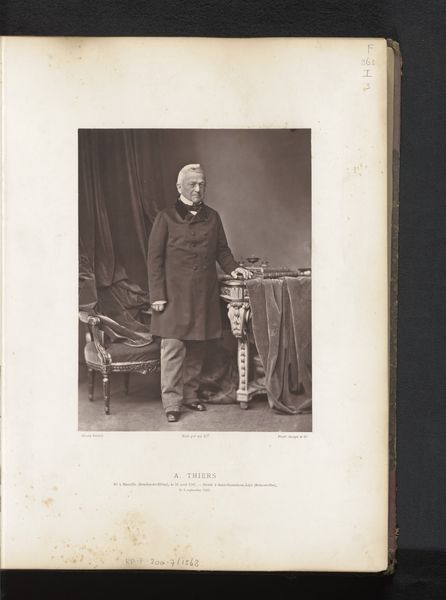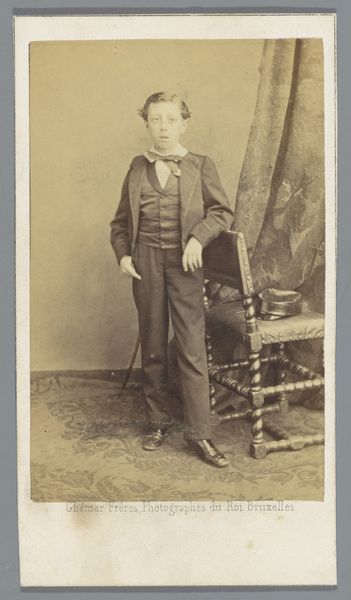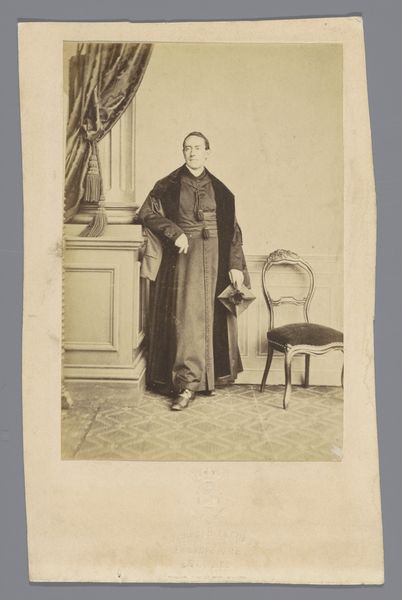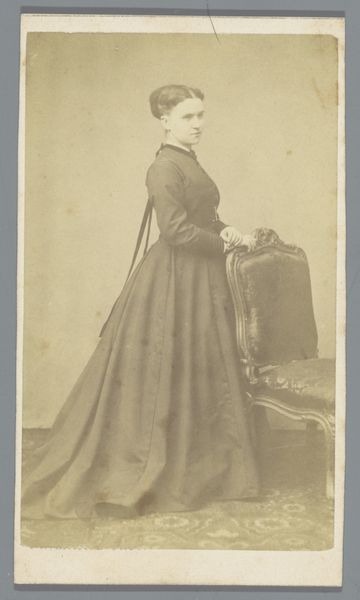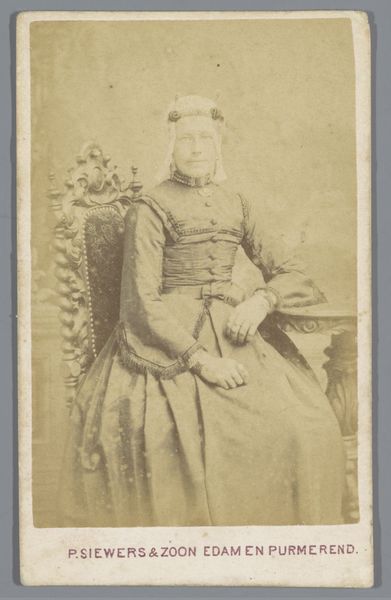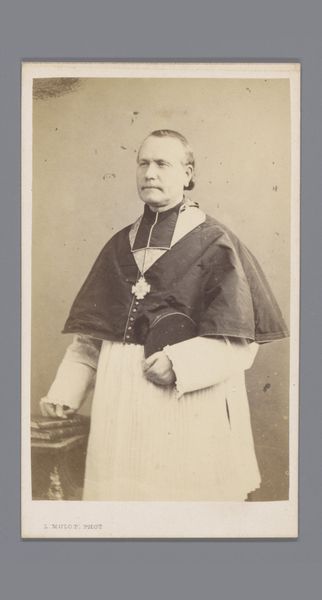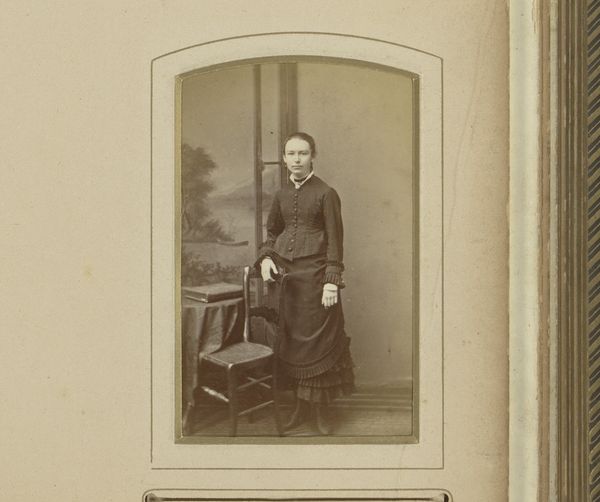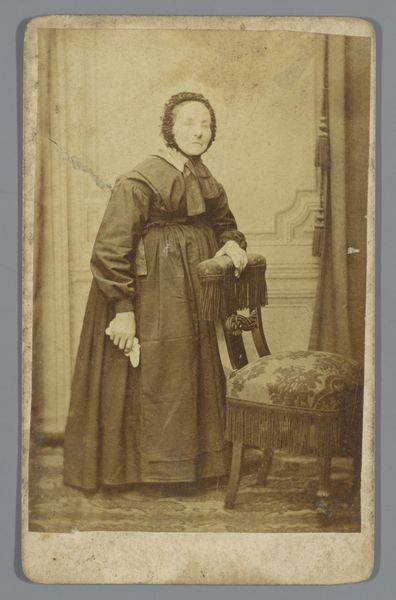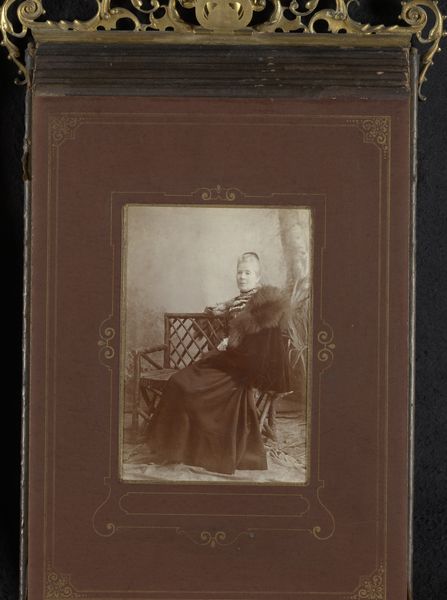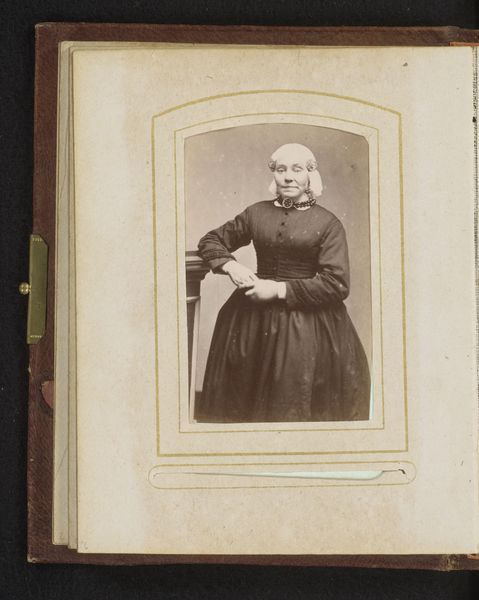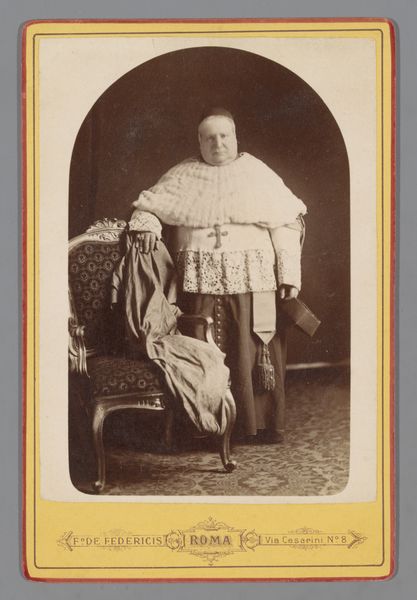
photography
#
portrait
#
photography
#
genre-painting
Dimensions: height 143 mm, width 98 mm
Copyright: Rijks Museum: Open Domain
Curator: This captivating image, entitled "Studioportret van een geestelijke," roughly translates to "Studio Portrait of a Clergyman." It was produced sometime between 1875 and 1900. Editor: Ah, the formal seriousness! Look at the rigid pose and the somewhat severe expression, giving an impression of solemnity—or perhaps slight boredom, which feels quite contemporary. Curator: The piece, which comes to us from the collection of the Rijksmuseum, certainly echoes themes commonly found in genre paintings, don't you think? Photography offering a mirror to earlier painterly traditions. The sitter is believed to be Johannes Petrus Oppers. Editor: Absolutely! Though the greyscale of the photograph might mask details, there is undeniable storytelling power. The dark garments set against a lighter background evoke an intriguing mix of power and piety, with perhaps a whisper of theatricality with the draped background. I almost want to invent what's written in the little book in his hand. Curator: And that is no accident, I am sure. The book as a symbol is meant to reflect wisdom, knowledge, even devotion, drawing from centuries of religious art—consider the Book of Gospels. And then there is the table on which he leans, drawing perhaps upon the symbolism associated with Eucharist in religious painting? Editor: Hmm, a somber symbol, given that table's connection with the Last Supper and sacrifice. I wonder about the choices the photographer made. Was it an aesthetic inclination? Did it echo the symbolic traditions consciously? The backdrop almost seems as though a play of illusion... and a little kitsch. Curator: Or perhaps it hints at something far deeper; as a work of portraiture this asks many questions. How much did the conventions and expectations of the time influence presentation? The sitter appears thoughtful if posed, presenting more as archetype of the cleric, even the individual priest, a statement on religious order, and individual identity during that late nineteenth-century moment. Editor: Ultimately it offers us a mirror too, perhaps. Showing us something not just of its time, but of human dedication—and the images we weave around that dedication. Curator: An image laden with codes and cultural echoes resonating still today. Editor: Exactly. You look at this photo and get sucked into another century's sense of virtue, authority... and just a dash of sepia-toned melancholy.
Comments
No comments
Be the first to comment and join the conversation on the ultimate creative platform.
